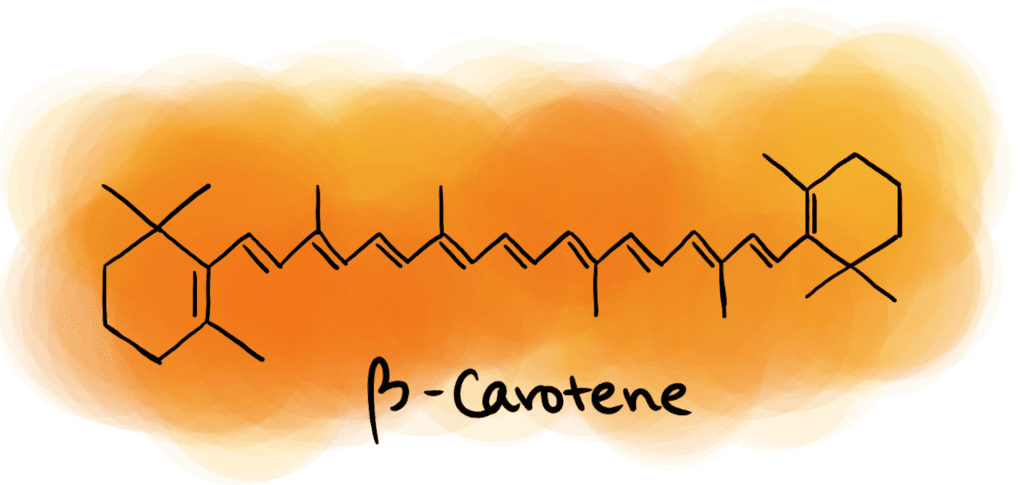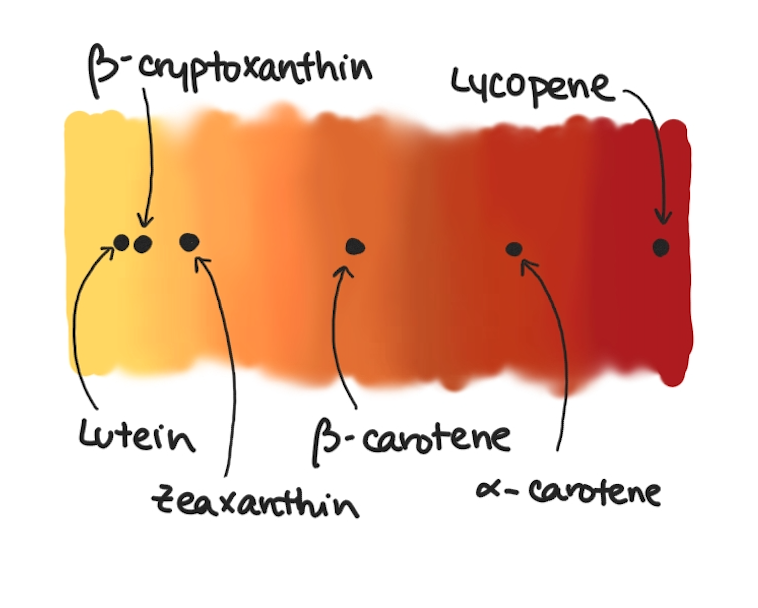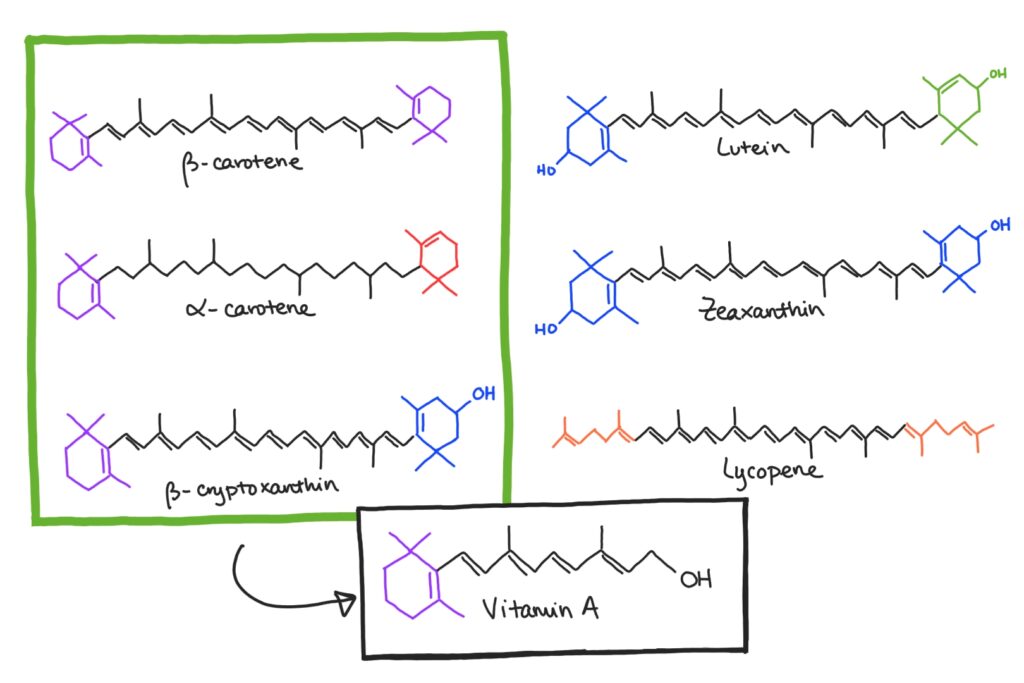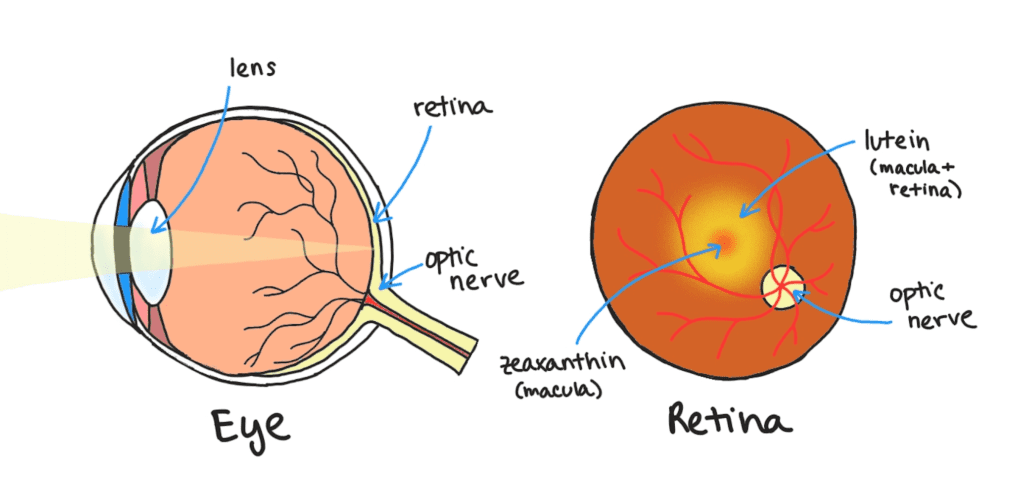
Different Types of Carotenoids
A closer look at the antioxidant pigments and their health benefits
If you’re a fan of Professor Torbert and his Orange Corn you’re likely already familiar with the term carotenoids. As a refresher, carotenoids are the antioxidant pigments that make Orange Corn orange. In our previous blog post, “What are Carotenoids,” we delved into what exactly a carotenoid is and how they keep us healthy, but we did not really dive into the different types of carotenoids and what each one does. So keep reading to learn more on how carotenoids are categorized, how vitamin A is made from carotenoids, and how small tweaks to your meals can make carotenoids easier for your body to absorb and reap their health benefits!

The Main Categories
“Carotenoids” is the umbrella term that refers to every kind of yellow, orange, or red pigment that plants use in photosynthesis. There are over 750 specific carotenoids (Zafar et al., 2022), but the six most common and important ones in our diets are alpha-carotene, beta-carotene, beta-cryptoxanthin, lutein, zeaxanthin and lycopene (Szalay, 2022). While the names all sound very different, all carotenoids are similar in their structure and size, and are yellow to red in color.

Carotenoids can be split into two categories: carotenes and xanthophylls. Simply put, xanthophylls have oxygen in their chemical structure, and carotenes don’t. This categorization however isn’t very useful when discussing their nutritional benefits, so carotenoids can also be categorized as provitamin A carotenoids (carotenoids that can be turned into vitamin A in the body) and non-provitamin A carotenoids.
Provitamin A Carotenoids: α-carotene, β-carotene, and β-cryptoxanthin

Vitamin A, as you can see in the above picture, is a molecule with a β-ionone ring (shown in purple), with a carbon chain. This β-ionone ring is what distinguishes provitamin-A carotenoids (the green box) from the rest. In the body, these provitamin-A carotenoids are simply cut in half to produce vitamin A, with β-carotene resulting in twice as much vitamin A, because it has two β-ionone rings. When ingested through foods high in these carotenoids, these vitamin A molecules can then be used by the body to support the immune system and eye health.
Lutein and Zeaxanthin
Although the xanthophyll carotenoids, lutein and zeaxanthin, can’t be turned into vitamin A, they still pack a nutritional punch. Lutein and zeaxanthin have been found to be the only carotenoids to concentrate in the lens and retina (specifically the macula) of the eye, with a higher concentration of zeaxanthin in the macula, and a higher concentration of lutein in the rest of the retina and the lens. Lutein and zeaxanthin are very good at absorbing very short blue waves of light, which are reactive and can cause degeneration in retinal cells (Mrowicka et al., 2022). These xanthophyll carotenoids help to prevent this degeneration. Because lutein and zeaxanthin cannot be produced by the body, in order to maintain healthy vision, it is critical that an appropriate amount of both carotenoids are consumed in one’s diet (Zafar et al., 2022).

In terms of maintaining eye health, lutein and zeaxanthin are specifically linked to promoting healthy eye function and reducing one’s risk in developing age-related macular degeneration (AMD), and cataracts (Mrowicka et al., 2022), two of the leading causes of vision loss in the US. AMD is the result of damage to the macula due to aging. It typically affects older people and can lead to reduced sight or blindness. There is currently no cure for AMD, but studies have found that lutein and zeaxanthin can have positive effects in preventing or slowing down AMD progression due to their ability to protect the eye by filtering blue light. Cataracts is also a condition affecting the eye that causes the clouding of the lens resulting in vision loss if not treated. While less studied than AMD, research shows that lutein and zeaxanthin can also have a protective effect against cataracts (Mrowicka et al., 2022).
Professor Torbert’s Orange Corn contains significantly higher levels of lutein and zeaxanthin than other corn varieties as well as a small dose of provitamin A carotenoids. So, the next time you add Professor Torbert’s Orange Corn to a dish, know that you are giving your body an added boost of multiple health-benefitting carotenoids!
Orange Corn, Carotenoids, and Bioavailability
Have you ever debated if you should add that pat of butter to your grits? Well, if they’re Professor Torbert’s Orange Corn Grits, adds more than just flavor! This is due to its ability to enhance the bioavailability of carotenoids, or in other words, increase the amount of carotenoids that are able to be absorbed and used by the body. Vitamin A and carotenoids are lipid-soluble, which means that they act like oil and water: they don’t mix. Your body is made of 70% water, so carotenoids resist getting absorbed by your body. However, your body is very good at absorbing fats from your food, allowing your body to properly absorb carotenoids when they are consumed with fat (Szalay, 2022). By adding fat to your grits (such as butter), the carotenoids dissolve into the fat, which allows the body to take up the carotenoids, and make them more bioavailable. Therefore, adding a small amount of fat to your Orange Corn can actually help you to enjoy the benefits of carotenoids!
Carotenoids: A Large Umbrella
In short, there are a huge amount of carotenoids out there, and many ways to classify them. One major group is provitamin A carotenoids, which contain molecules that can be split in half to make vitamin A in the body. Non-provitamin A carotenoids, like lutein and zeaxanthin, also play important roles in body functions, such as their job in the eye in protecting it from blue light damage. Carotenoids cannot be made by the body, so it is vital they are consumed as part of a healthy, balanced, diet. Through his work on Orange Corn, Professor Torbert has hand selected varieties of corn with increased levels of these vital carotenoids critical in maintaining healthy vision and supporting the immune system. So, the next time you grab a bag of Professor Torbert’s Orange Corn, know that you are not only creating a delicious meal but also delivering important nutrients to your body!
SOURCES:
Mrowicka, M., Mrowicki, J., Kucharska, E., & Majsterek, I. (2022). Lutein and zeaxanthin and their roles in age-related macular degeneration—Neurodegenerative Disease. Nutrients, 14(4), 827. https://doi.org/10.3390/nu14040827
Szalay, J. (2022). What Are Carotenoids? LiveScience. Retrieved from https://www.livescience.com/52487-carotenoids.html
Zafar, J., Aqeel, A., Shah, F. I., Ehsan, N., Gohar, U. F., Moga, M. A., Festila, D., Ciurea, C., Irimie, M., & Chicea, R. (2021). Biochemical and immunological implications of lutein and zeaxanthin. International Journal of Molecular Sciences, 22(20), 10910. https://doi.org/10.3390/ijms222010910
